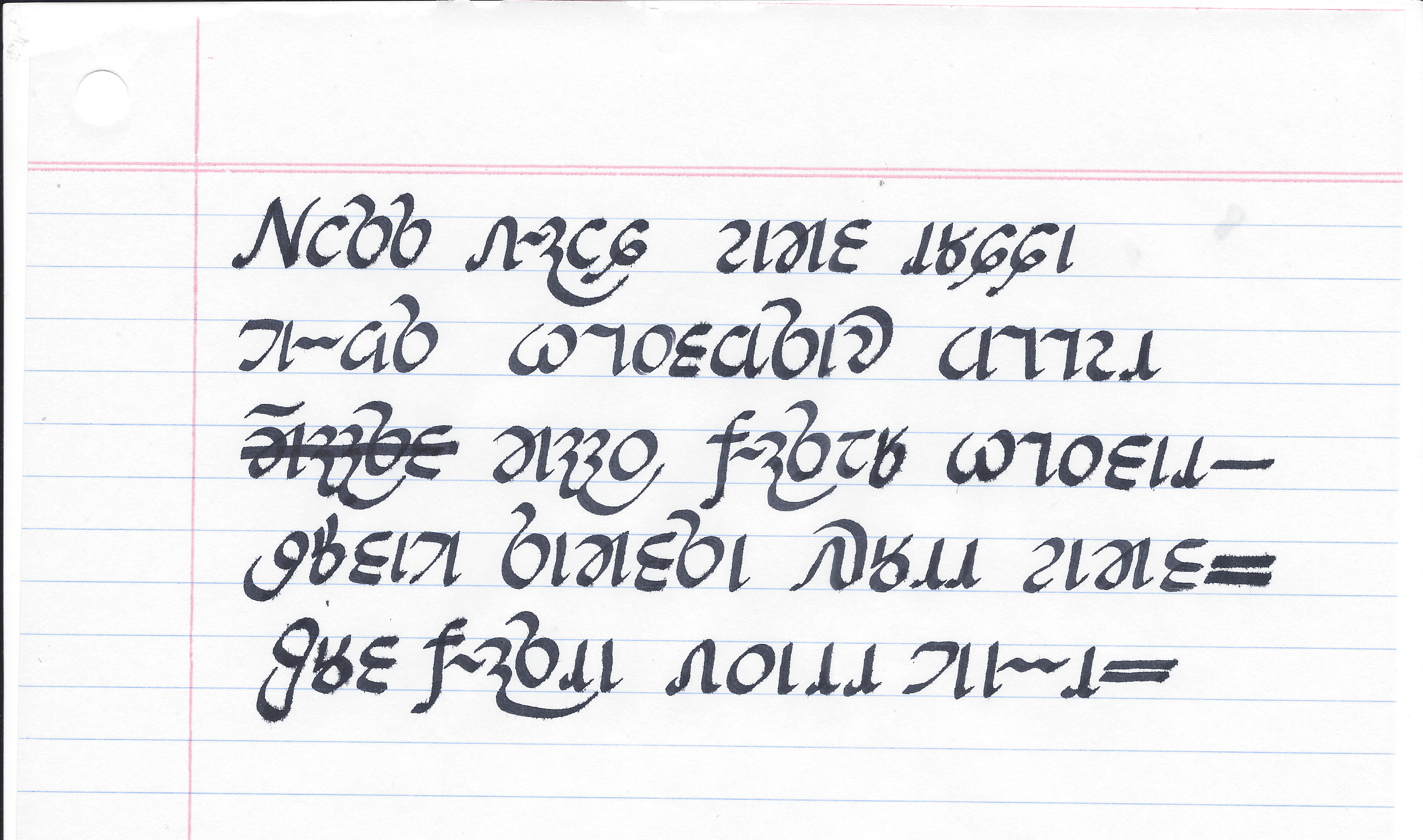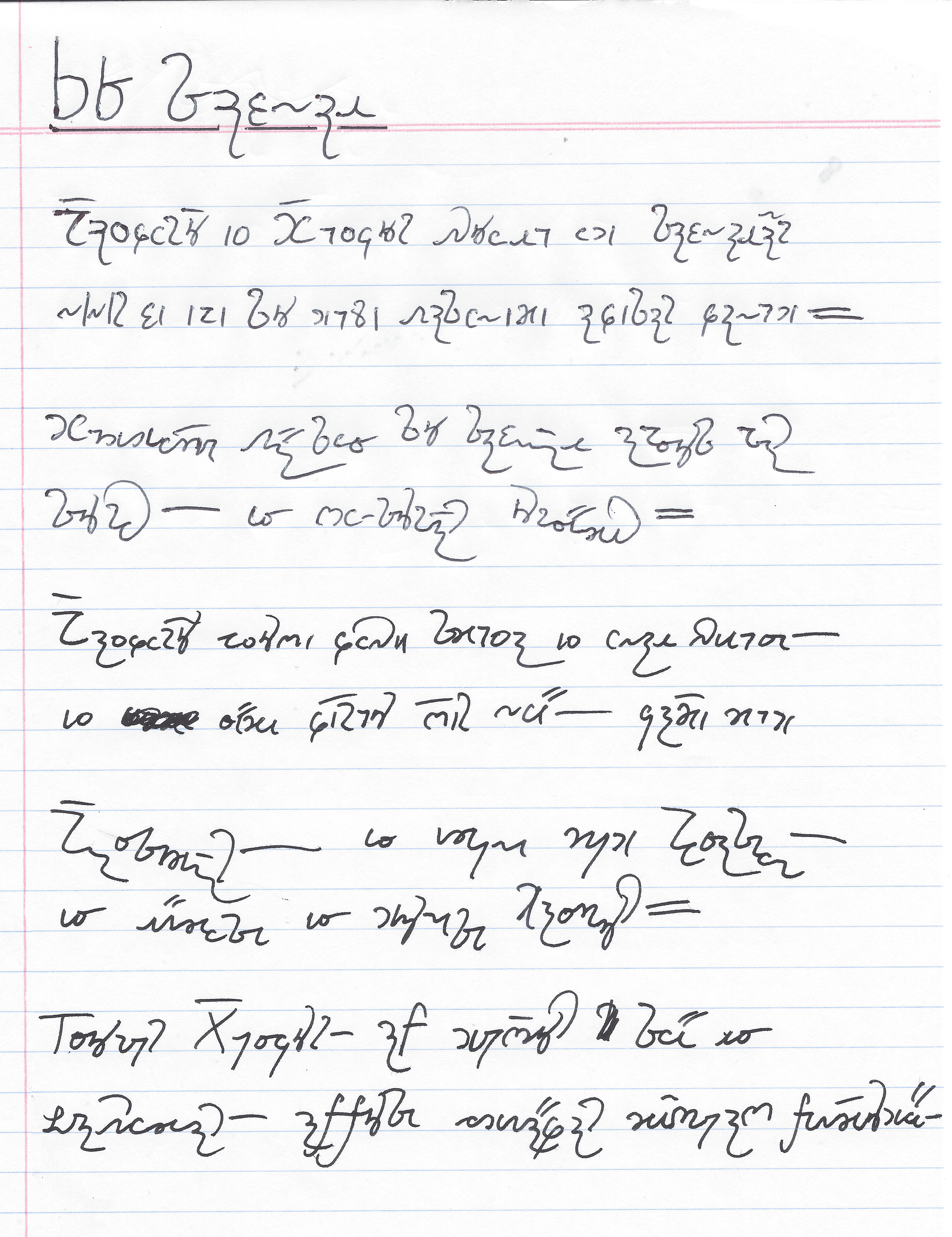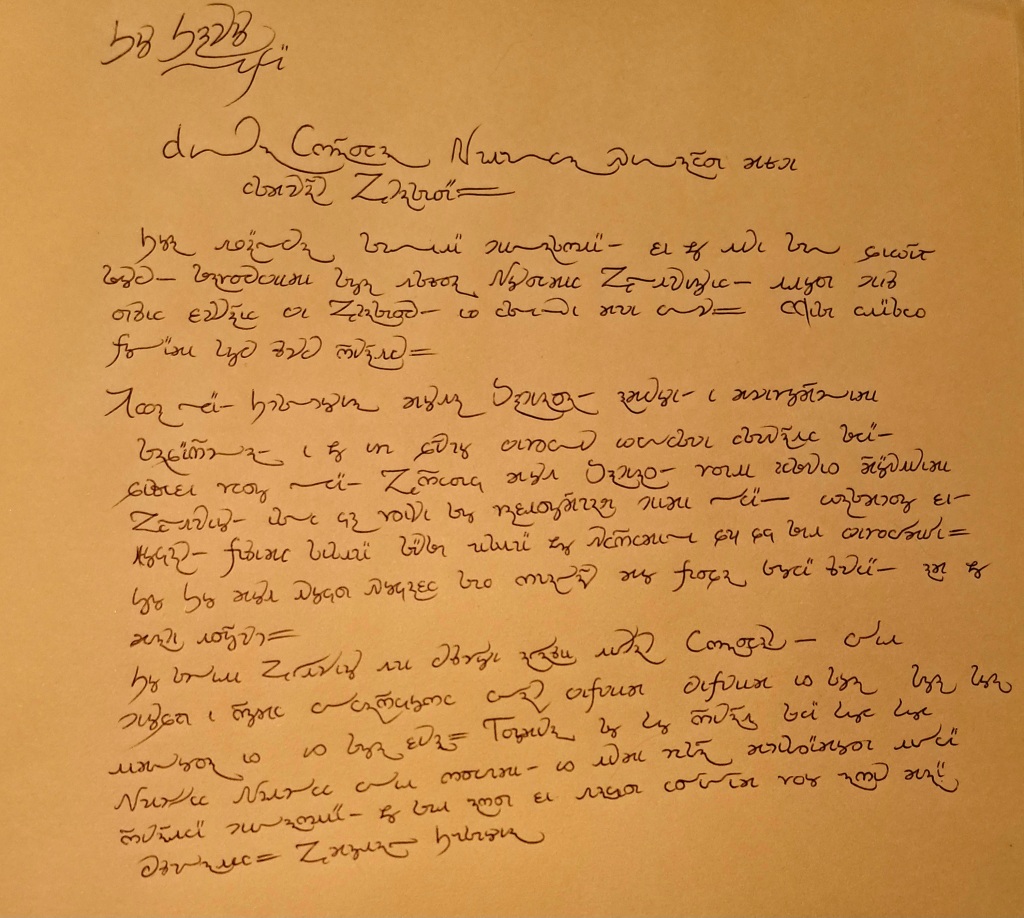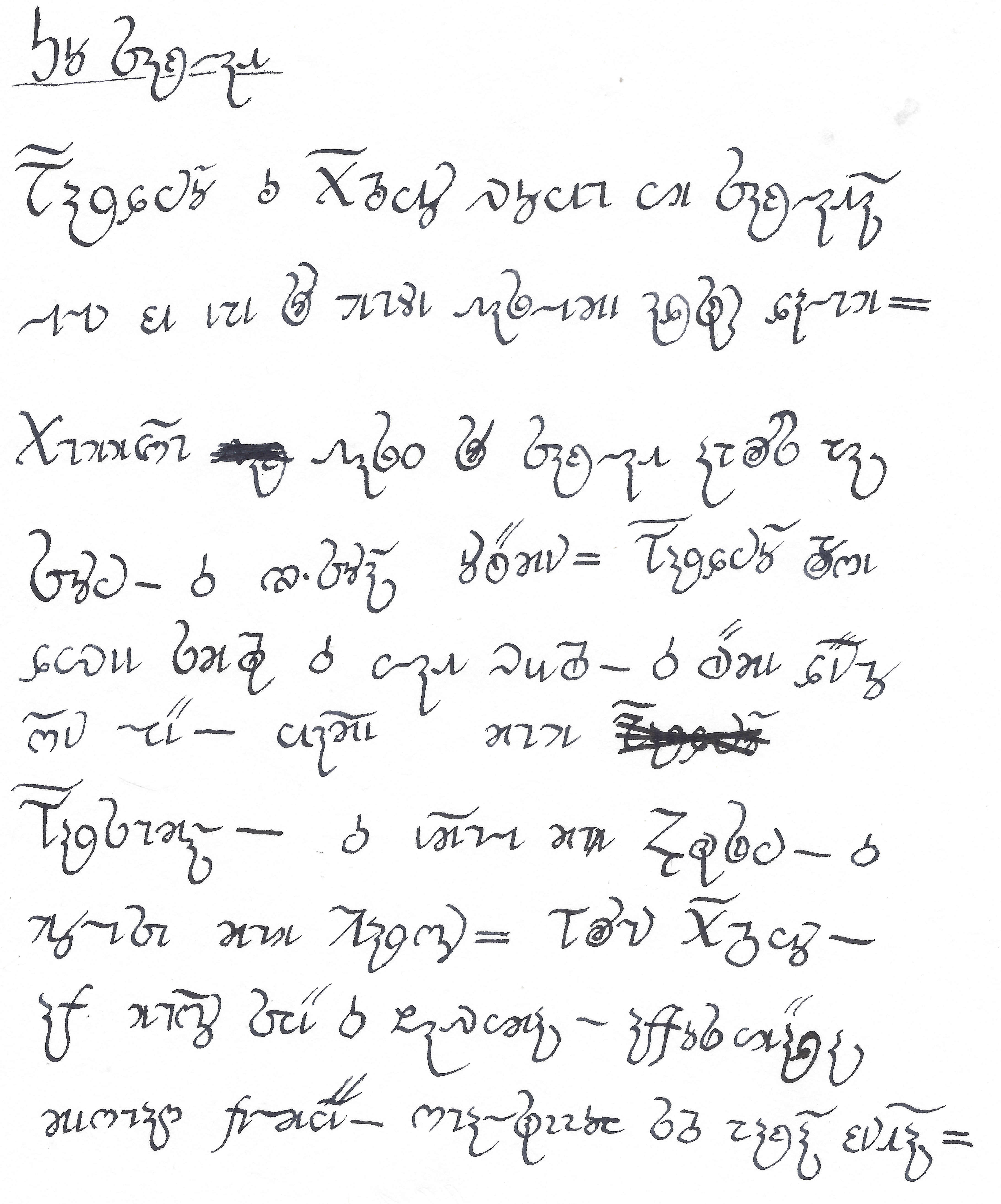Funnily enough, that is remarkably similar to the style I just independently came up with using a broad-edged nib. I won’t scan it since I’m not convinced the ink has completely dried yet, but a photo should do as well:

(Please excuse the lumpiness; my hands have gotten confused from switching between different styles.)
The top line is an Italic-inspired Verdurian hand with some ligatures, written using a ~1mm broad-edge nib; after some experimentation, I think this seems most comfortable for long-form writing. The bottom line is the same text rewritten with a pointed nib: like I said, I find it annoying to use, but this seems reasonably similar to zompist’s sample. (In fact I cheated a bit, since I wrote that after seeing zompist’s, but in any case it does seem like a natural development of the top line.)
So, now we have not only a sensible hand for Verdurian, but also a plausible way for it to have evolved. Cool!
zompist wrote: ↑Fri Nov 10, 2023 12:46 am
My impression was that the letters <a> and <d> are very hard to connect to the next letter... but after thinking a bit I remember that I actually did that years ago. E.g. rather than writing a final swash for <a>, you just connect to the next letter. <u> is also a problem and I don't recall what I did with that.
It’s worth noting that some 16th-century Greek manuscripts (the ‘Baroque’ group of
https://spotlight.vatlib.it/greek-paleo ... tury-hands) display exactly these kinds of ligatures, and more, so this is very plausible. Admittedly, it looks like their pen is stressed in the opposite direction to that used for Verdurian (NW–SE vs NE–SW), which I imagine makes these kinds of flourishes easier for them, but for ⟨a⟩ I think it would still make sense.
EDIT: Found another fine example of this style — the
Grecs du roi typeface of the 16th century, as used e.g. in this version of the Gospel of John (
Wikimedia Commons):
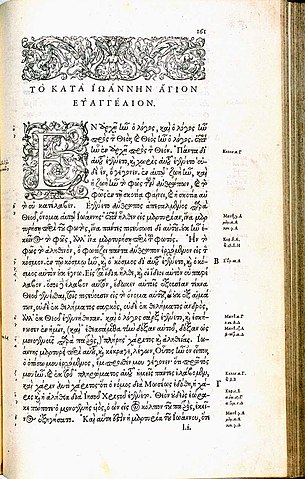
This shows many of the more bizarre ligatures of the period — I think my favourite is the ⟨ος⟩ seen in the last line, but for Verdurian the various ligatures of ⟨ϱ⟩ are probably more relevant. (It looks like there’s even a book entitled
Greek ligatures in printing, specifically to aid the poor palaeographers who have to decode this stuff.)
